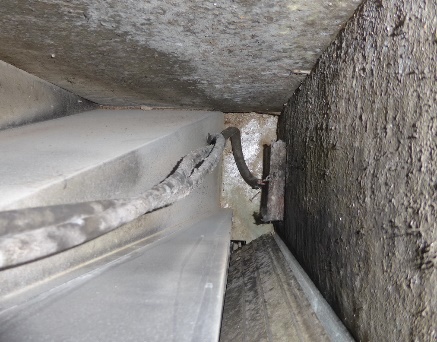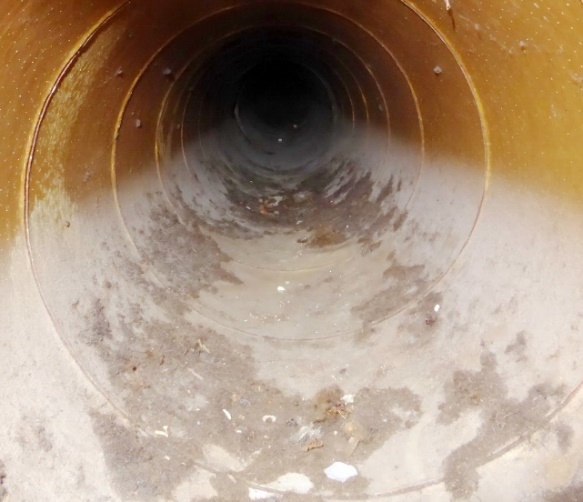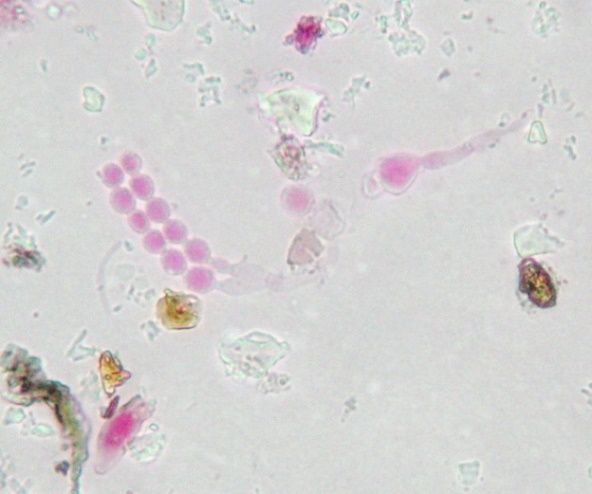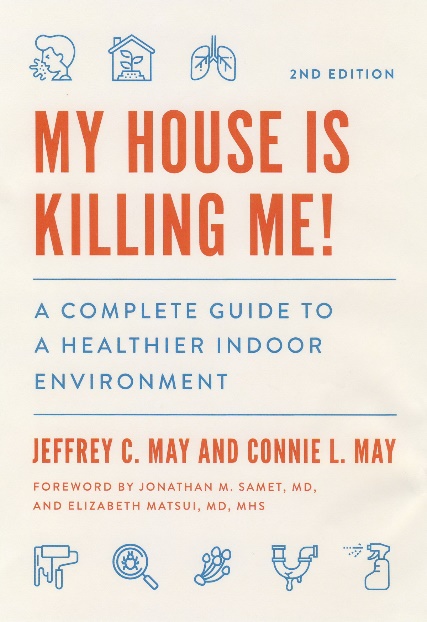IAQ IQ, Spring/Summer 2022
©2022 Jeffrey C. May
Univents
Some multi-unit residential buildings (and most schools) have univents installed along exterior walls. These units are often the source of air quality problems.
- They are rarely serviced adequately.
- Many that I’ve inspected don’t have pleated media filters that are airtight at the perimeter of the holder.
- Most of those I see contain mold growth.
- In schools teachers tend to use the supply grille at the top as a shelf, placing books and other objects there.
Vertical Stack Fan Coils
Vertical stack fan coils are also frequent sources of air quality problems.
- They are difficult to access, and some of the components can’t be accessed at all in order to be cleaned.
- The filtration is usually inadequate.
- Almost every vertical stack fan coil I’ve inspected has been full of mold growth.

into vertical stack unit from top supply-vent opening
Case Studies:
In one classroom that I investigated, the children were doing a science experiment to see if mold grew on bread. The containers with the bread were placed on top of the univents, and then the bread got moldy. This was a great way to aerosolize mold spores!
I was once hired by a woman who had rented an expensive apartment in a high-rise building in Boston. It was a corner apartment on an upper floor. The windows were tall, sunlight flooded many of the rooms, and the view of the harbor was breathtaking. She loved the apartment but couldn’t live there, because the univents were full of mold growth. She had called the maintenance personnel who supposedly cleaned the univents, but all they did was vacuum the moldy fibrous lining material rather than replacing it with closed-cell foam. And no vacuuming, no matter how thorough, can remove all the mold from fibrous lining material.
I recently investigated a small condominium on the first floor of a multi-unit building. The apartment was serviced by a vertical stack fan coil. I discovered that the condensate from vertical stack fan coils in apartments above this one were all draining down into the vertical stack fan coil in my client’s apartment. That condensate was full of mold and bacterial growth. Byproducts of that growth were being aerosolized whenever the blower was running. I investigated the condo in the winter. The man was asthmatic and had allergies including mold. Every time the blower turned on, he wheezed. I told him to stop using the vertical stack fan coil and depend on electric, oil-filled radiators instead. And if the building maintenance crew could not rectify this situation, he should consider moving out (but avoid moving into another apartment with univents or a vertical stack fan coil!).
Ducts in a Slab
Ducts in a slab become moldy, period. And why?
Because a slab is in contact with the earth. Even if there is a vapor barrier under the slab, such barriers can be torn, be or become open at the edges, or even contain holes purposely made during construction to help the slab dry out. When ducts are installed within a slab, condensation occurs within the ducts, leading to mold growth. And metal ducts within a slab can rust out, leading to an inefficient/uneven delivery of conditioned air as well as the entrainment of air into the ducts that contains byproducts of microbial growth.
And when ducts are installed in the soil beneath a slab? Then such problems are just compounded.
Case study:
In a modern single family that I investigated, the ducts within the slab had rusted out in many locations. The occupant, who had allergies, had recently purchased the home and experienced respiratory symptoms whenever the heat turned on. I recommended that she abandon the system, seal the ducts, and heat the house with electric baseboard heaters, electric oil-filled radiators, or mini splits. These options weren’t problem free, however.
- Electric baseboard heat is expensive, and occupants have to be very careful not to have combustible materials come in contact with the heaters.
- She would have needed a number of electric, oil-filled radiators to heat the home, and the heat could have been uneven.
- Mini-splits always have inadequate filtration and almost always become moldy.
In the end, her best option would probably be to sell the property and move into a house without a duct system or to replace the hot-air system with a hot-water system.


(spores and hyphae stained pink)
Tips to give your clients:
- Univents and vertical stack fan coils should be inspected and cleaned as needed.
- It’s best if internal fibrous lining material is replaced with closed-cell foam or is encapsulated with a paint made for the purpose, particularly if the system includes air conditioning.
- Anyone with mold sensitivities should be very cautious about moving into an apartment or a condominium with univents or vertical stack fan coils; and should avoid living in a property with ducts installed within or beneath a slab.
- Ducts in or under a slab should be inspected and cleaned as needed. If moldy or rusted out in any way (or if consisting of asbestos-containing material such as Transite), the ducts should be abandoned and the supplies and returns should be sealed. New supply and return ducts can be installed at the ceiling.
- Mini-splits must be cleaned at least annually if not more often if black spots of mold are visible on the supply louvers or if such spots are in the grey dust on the blower blades.
(Unless otherwise indicated, May Indoor Air Investigations LLC owns all photographs, micrographs, and scanning electron images in this article.)

Check out our new book, My House is Killing Me! A Complete Guide to a Healthier Indoor Environment, available on line and published in December 2020.
